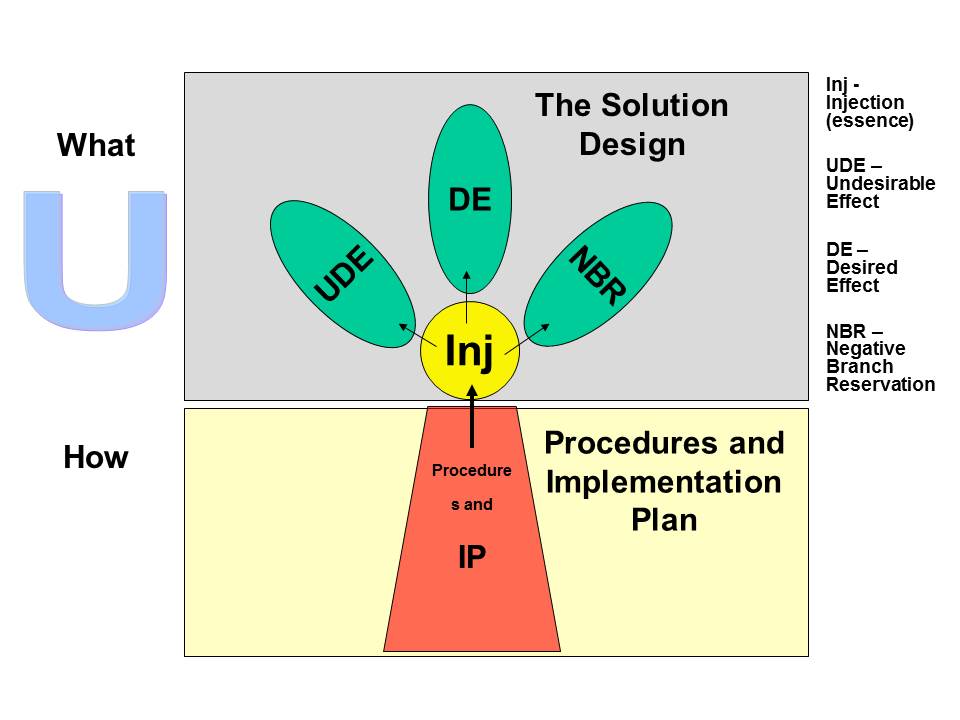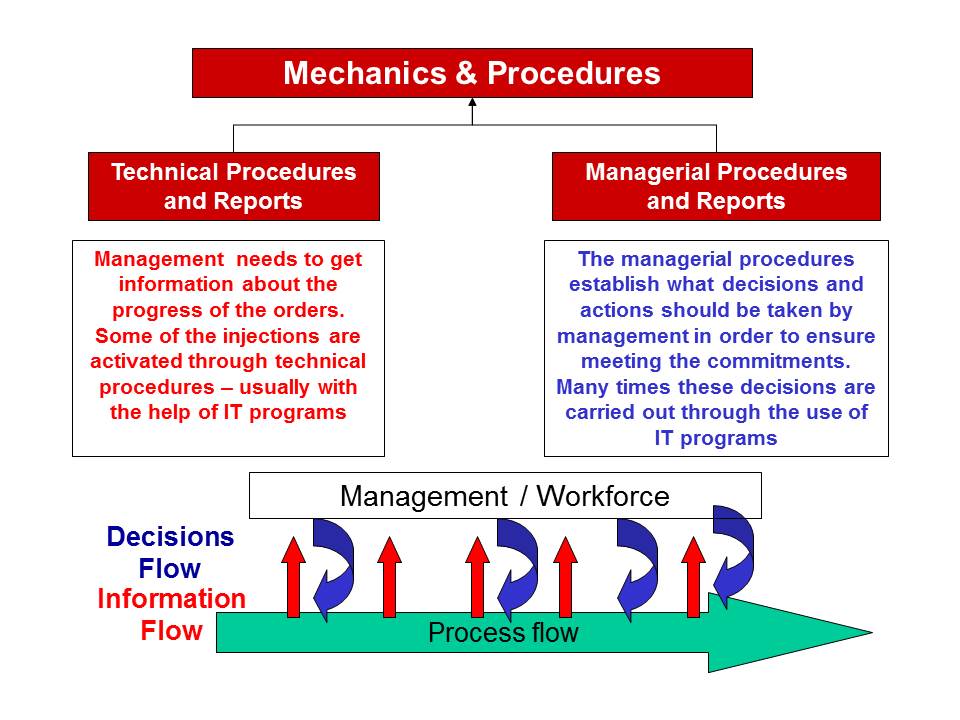Injection
In system change – the Injection is a new feature or a new managerial procedure that replaces an existing procedure or an existing feature that according to our analysis are responsible for the gaps in performance (UDEs – Undesirable Effects).
The Injection has a special role in the design of the TOC solution. Solutions of Managing the TOC Way stem from the Pivot and brings new elements to reality – Injections and Desired Effects.
In solving day-to-day dilemmas and conflicts – the Injection is an action, or set of actions that represent another mode of behaviour as compared to the one that has caused the conflict or dilemma.
Injection Flower
When constructing (designing) and afterwards communicating a TOC solution we have to ensure that for every injection of the solution we have the full understanding of:
1. The essence of the injection – what is new about it- the feature and/or the procedure
2. Which major problem or problem symptoms (UnDesirable Effects) it addresses – “If injection is a solution then what is the problem?” And which feature/procedure in the current reality it replaces.
3. What are the benefits (Desired Effects) from the injection (“why should we consider implementing it?”).
4. Which potential negative side effects (Negative Branches) can emerge and how to prevent them from happening.
5. What practical actions are needed to be taken in order to implement the Injection – Implementation Plan.
Injection Implementation – Procedures and Reports
Technical Procedures and Reports – Management needs to get information about the progress of the orders. Some of the injections are activated through technical procedures – usually with the help of IT programs.
Managerial Procedures and Reports – establish what decisions and actions should be taken by management in order to ensure on-time delivery. Many times these decisions are carried out through the use of IT programs.
Source: Oded Cohen and Jelena Fedurko, Theory of Constraints Fundamentals, 2012

